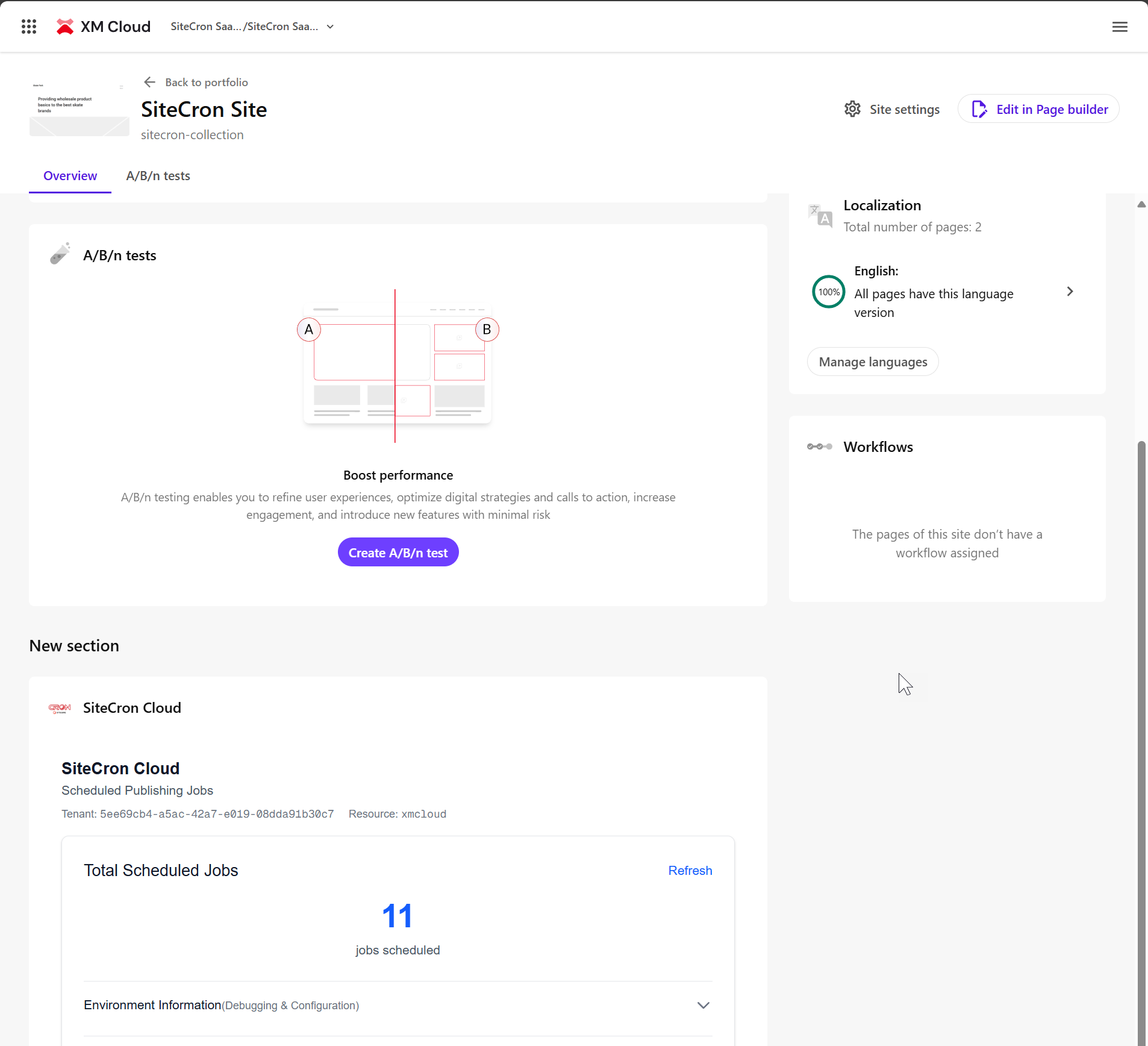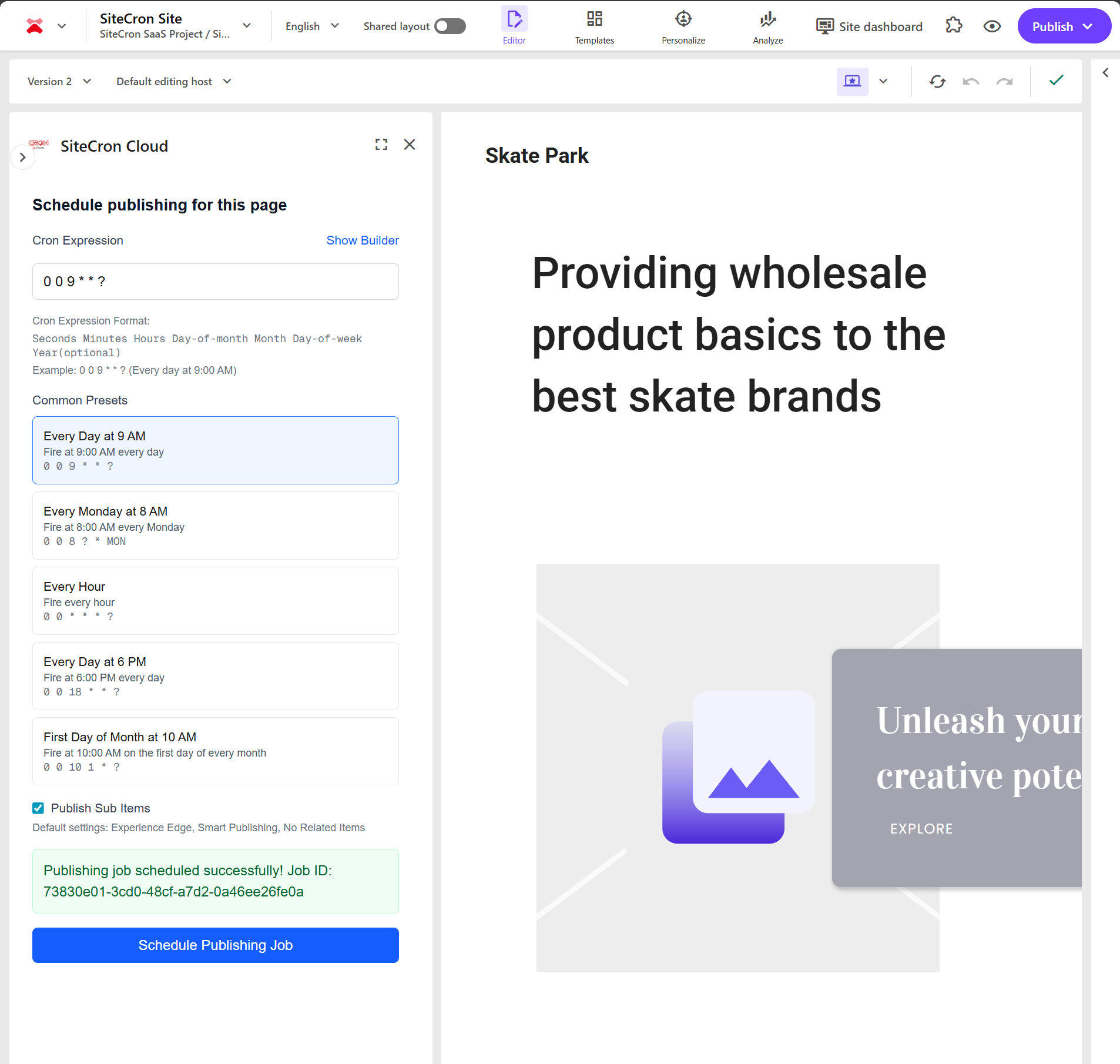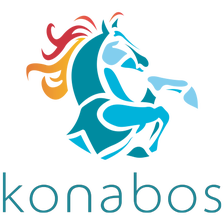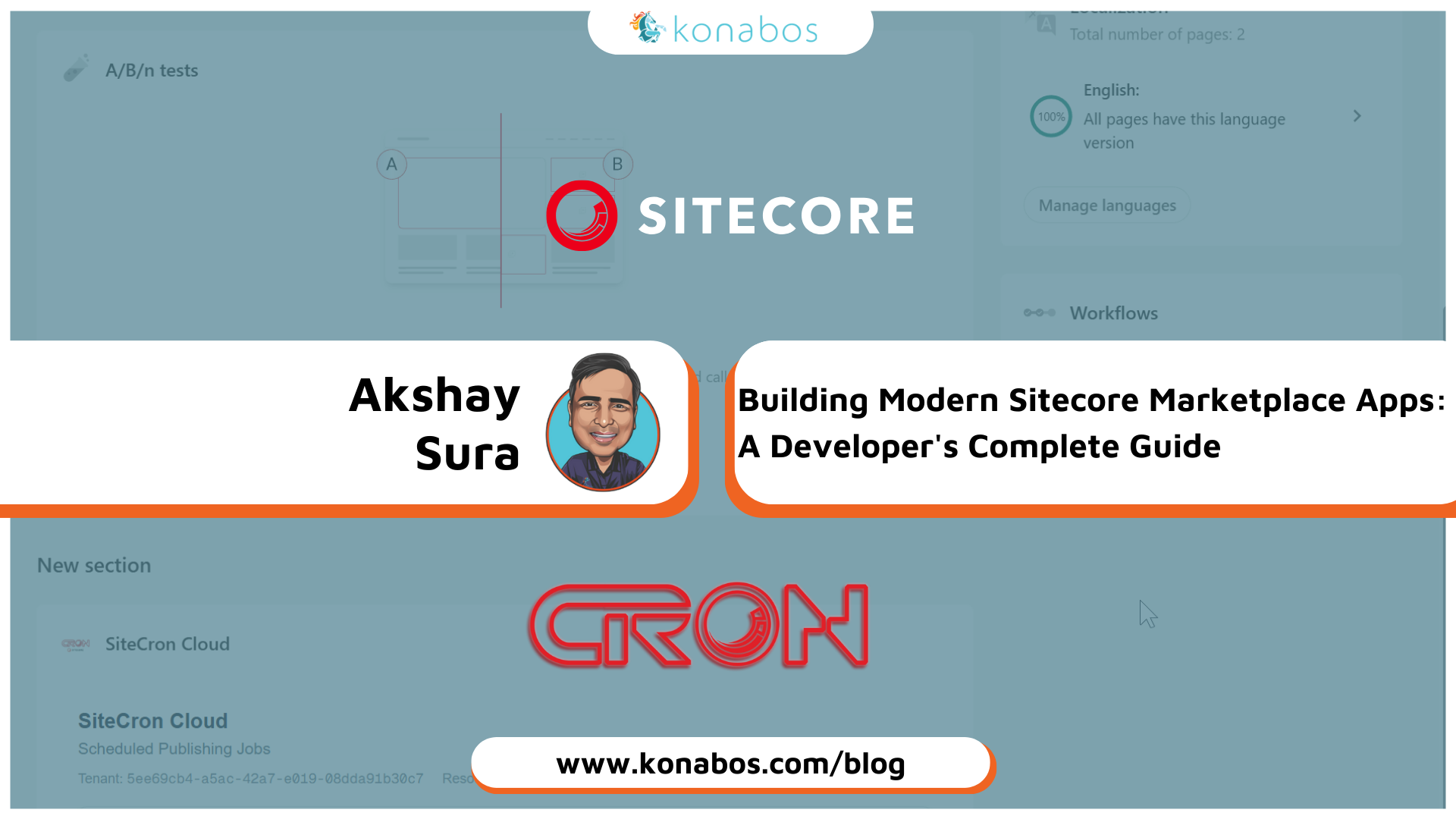Building Modern Sitecore Marketplace Apps: A Developer's Complete Guide
Akshay Sura - Partner
15 Aug 2025
The Sitecore Marketplace is set to redefine the way developers enhance Sitecore ecosystems. Sitecore marketplace apps are lightweight web applications that fit perfectly within Sitecore’s fabric, removing the headaches tied to legacy module deployments and the endless battles over version alignment.
This guide will help you step by step through the creation of a fully-fledged marketplace app, using SiteCron Cloud as our running example: an innovative scheduling tool that lets content editors kick off publishing flows triggered by easy-to-read CRON expressions.
The current version of SiteCron is used by a lot of installs, and when XM Cloud came along, so did the requests to see if we can create a version of SiteCron for SaaS.
Understanding the Sitecore Marketplace Ecosystem
The Modern Architecture
Sitecore Marketplace apps operate within a sophisticated ecosystem that provides:
Extension Points: Specific UI locations where your apps can be embedded
- Dashboard widgets for analytics and overviews
- Page builder context panels for page-specific tools
- Custom fields for specialized data input
- Full-screen applications for complete experiences
SDK Integration: Powerful JavaScript/TypeScript SDK providing:
- Context and API access
- Automatic authentication via Sitecore's identity system
- Multi-tenant support with organization-level management
API Access: Controlled access to Sitecore's Management APIs for content operations
Why Multiple Extension Points Matter
For SiteCron Cloud, we implemented both dashboard widgets and page context panels:
- Dashboard Widget: Provides an overview of scheduled jobs across all sites
- Context Panel: Enables page-specific scheduling directly in the page builder
This dual approach delivers both macro-level insights and granular control, creating a cohesive user experience.
SiteCron Cloud
The Business Challenge
Content teams frequently need to publish content at specific times—product launches, marketing campaigns, and scheduled announcements. Manual publishing is error-prone and requires someone to be available at precisely the right moment.
Our Solution
SiteCron Cloud delivers:
- Automated scheduling using industry-standard cron expressions
- Visual cron builder making complex scheduling accessible to non-technical users
- Page-specific scheduling is integrated directly into the page editing workflow
- Dashboard overview of all scheduled jobs across the organization
- External service integration with robust job scheduling engines
Context Management
Understanding Sitecore contexts is crucial for effective marketplace apps:
Application Context - Available everywhere:
- Tenant information and resource IDs
- Environment details and configuration
- User permissions and organization data
Pages Context - Page builder only:
- Current page information and metadata
- Site details and configuration
- Real-time updates through subscriptions
Building Extension Points
Dashboard Widget
The dashboard widget provides high-level insights across the entire tenant.

Page Builder Context Panel
The context panel integrates directly into the content editing workflow.

Design System Considerations
For production apps, Sitecore recommends using the Blok Design System:
npm install @sitecore/blok-ui
Benefits:
- Consistent look and feel with Sitecore's interface
- Built-in accessibility compliance
- Responsive design patterns
- Reduced maintenance overhead
Service Layer Architecture
Clean separation between UI and API logic is essential for maintainable code. We built the API layer and hosted it in Azure.
Architecture Guidelines
Separation of Concerns
- Keep extension points focused on their specific use cases
- Separate UI components from business logic
- Abstract API calls into dedicated service layers
Context Management
- Initialize SDK conditionally based on extension point requirements
- Handle context switching and updates gracefully
- Implement retry mechanisms for robust SDK initialization
State Management
- Use React hooks for local component state
- Implement optimistic updates for responsive user experiences
Key Success Factors
- Start Simple: Begin with one extension point and expand incrementally
- Design for Scale: Plan your architecture to support future features
- Test Early and Often: Validate your approach in real Sitecore environments
- Follow Standards: Follow Sitecore's design and development guidelines
- Monitor and Optimize: Continuously improve performance and user experience
Get Started Today
- Sitecore Marketplace Documentation
- Sitecore Marketplace SDK for JavaScript
- Blok Design System
- Next.js Documentation
- TypeScript Handbook
- SiteCron
Ready to build the next generation of Sitecore extensions? The marketplace ecosystem is waiting for your innovation.

Akshay Sura
Akshay is a nine-time Sitecore MVP and a two-time Kontent.ai. In addition to his work as a solution architect, Akshay is also one of the founders of SUGCON North America 2015, SUGCON India 2018 & 2019, Unofficial Sitecore Training, and Sitecore Slack.
Akshay founded and continues to run the Sitecore Hackathon. As one of the founding partners of Konabos Consulting, Akshay will continue to work with clients to lead projects and mentor their existing teams.



Share on social media